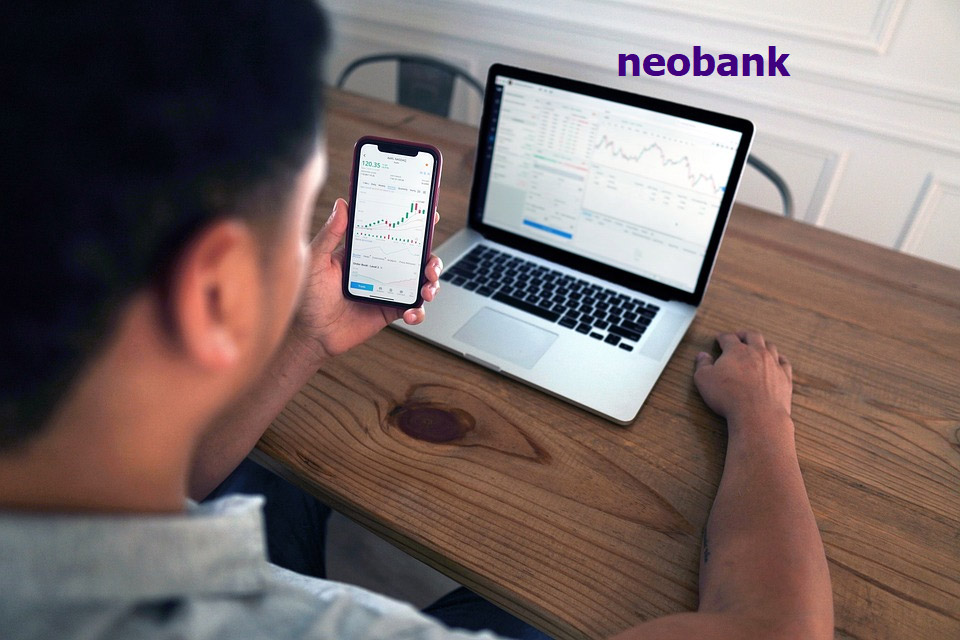
Neobank: Meaning, Benefits, Features, Future, and Differences from Traditional Banking
A neobank is a financial technology-driven institution operating online without physical branches. It provides banking services through digital platforms such as mobile applications and web interfaces.
Unlike traditional banks, which maintain physical infrastructure, neobanks leverage technology to offer more accessible, faster, and streamlined financial services.
These banks typically partner with licensed banking institutions to ensure deposit insurance and regulatory compliance, while focusing on user experience, affordability, and innovation.
Types of Neobanks
-
Independent Neobanks: Operate with their banking licenses and are regulated similarly to traditional banks.
-
Partnered Neobanks: Collaborate with established banks to offer insured services without holding licenses themselves.
-
Specialized Neobanks: Target specific audiences such as freelancers, small businesses, or digital nomads.
Key Features of Neobanks
-
Paperless account opening through mobile apps
-
Real-time transaction tracking and spending insights
-
Integrated budgeting and financial planning tools
-
24/7 customer support via chat
-
Virtual and physical debit cards
-
No-branch digital experience
Benefits of Using a Neobank
1. Convenience: Users can perform all banking tasks, such as payments, transfers, and balance monitoring, on their smartphones without visiting a branch.
2. Lower Costs: Because they do not have the overhead of maintaining physical branches, neobanks often charge fewer or no fees for account maintenance, ATM use, and overdrafts.
3. Faster Service: Account setup and verification can often be completed in minutes, enabling quick service access.
4. Personalized Financial Management: Through AI-powered tools, users receive automated budgeting tips, spending breakdowns, and goal-setting functionalities.
5. Enhanced Security: To protect customer data, neobanks employ encryption, biometric verification, and multi-factor authentication.
6. High Accessibility: Especially beneficial for users in remote areas or those underserved by traditional banks.
Security Systems in Neobanks
Security is central to neobanking. Robust measures include:
-
Encryption: Secures data transmission between devices and servers.
-
Biometric Authentication: Face or fingerprint recognition adds a layer of protection.
-
Multi-Factor Authentication: Combines passwords with SMS or app-based codes.
-
Compliance with Standards: Adherence to frameworks such as PCI DSS ensures secure handling of financial data.
-
Monitoring and Alerts: Unusual activity triggers instant notifications to users.
AI in Neobanks
Neobanks utilize Artificial Intelligence (AI) in several functional areas:
-
Fraud Detection: AI models identify anomalies in transactions that might indicate fraud.
-
Chatbots: Provide customer service support 24/7, handling FAQs and common queries.
-
Personalized Insights: AI-driven financial analytics offer tailored advice.
-
Loan Assessment: Credit scoring based on alternative data enhances inclusion.
How Do Neobanks Work?
-
Onboarding: Customers register via an app, submit their digital ID, and complete KYC (Know Your Customer) requirements.
-
Account Management: Access savings, transfers, payments, and investments from the app.
-
Tools: Use integrated dashboards for budget planning, spending reports, and saving goals.
-
Payments: Make online purchases or ATM withdrawals using virtual or physical debit cards.
-
Support: Contact customer service through live chat or in-app messaging.
Differences Between Neobanks and Traditional Banks
| Criteria | Neobanks | Traditional Banks |
|---|---|---|
| Physical Presence | None | Extensive branch networks |
| Account Opening | Online only | Often requires an in-person visit |
| Fees | Usually lower or zero | Often higher maintenance and service fees |
| Technology | App-first, AI-integrated | Mixed legacy and digital systems |
| Services | Streamlined, niche-focused | Comprehensive financial products |
| Target Audience | Digital-savvy, younger users | Broader demographic |
| Regulatory Licensing | Often partner-based | Fully licensed and regulated |
Future of Neobanking
Neobanks are expected to expand their influence in both developed and emerging markets. Key drivers include:
-
Rising Smartphone Penetration: Increases access to digital banking.
-
Consumer Demand for Simplicity: Users prefer fast, transparent services over bureaucratic processes.
-
Financial Inclusion: Offers access to unbanked populations in remote regions.
-
Regulatory Innovation: Governments are developing fintech frameworks that enable digital-only banks to operate securely.
-
AI and Automation: More personalized services and cost-effective operations.
Limitations and Considerations
-
Lack of In-Person Support: Users who prefer face-to-face banking may find neobanks less satisfactory.
-
Limited Services: Some neobanks may not offer mortgages, wealth management, or complex lending products.
-
Regulatory Risks: In regions with unclear fintech regulations, neobanks may face operational hurdles.
-
Internet Dependency: Accessing services requires stable internet, which can be a barrier in rural zones.
How Businesses Use Neobanks
Businesses, especially SMEs and startups, benefit from neobank features such as:
-
Digital Invoicing and Payment Collection
-
Multi-user Access and Role Management
-
Expense Categorization and Reporting
-
API Integration for Finance Tools
-
International Payments at Lower Costs
Examples of Popular Neobanks
-
Revolut (UK): Offers personal and business accounts with global currency support.
-
N26 (Germany): Known for minimalist design and transparent pricing.
-
Chime (USA): Focuses on low fees and early direct deposit.
-
Tinkoff (Russia): Offers extensive investment and credit services.
Conclusion
Neobanks represent a forward-thinking evolution in the banking sector, combining technology, accessibility, and customer-centric design. Their rise reflects a broader shift towards digital financial ecosystems prioritizing efficiency, transparency, and user control. While they may not yet fully replace traditional banks for every service, their role in reshaping personal and business banking is undeniable.
Neobanks offer a powerful alternative for individuals and enterprises seeking flexibility, cost-effectiveness, and modern tools. However, before committing, assessing individual needs and reviewing each neobank's offerings, regulatory affiliations, and security measures remains essential.


